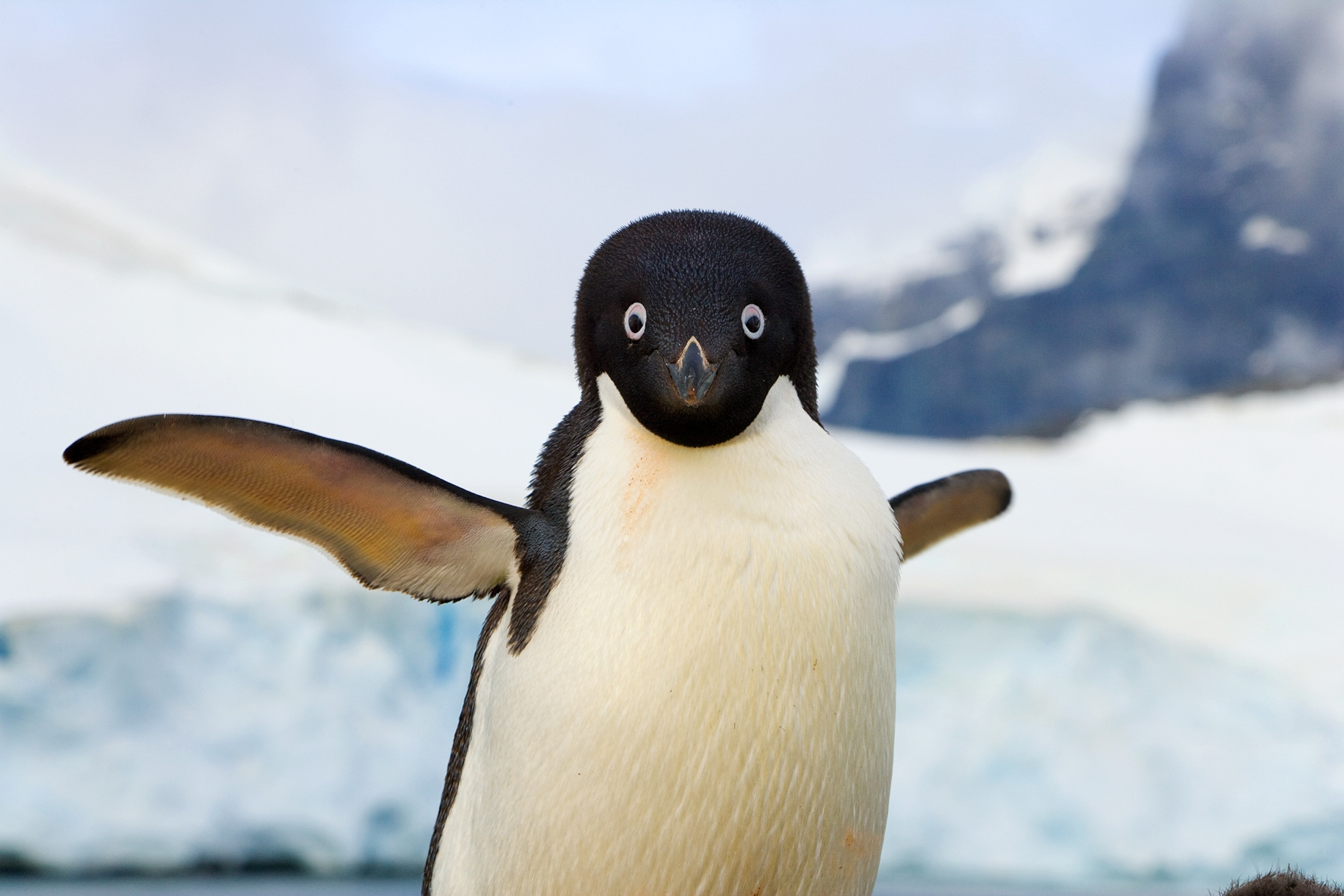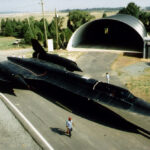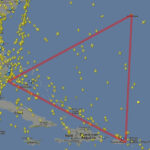The question “Can A Penguin Fly?” is often met with a mix of curiosity and perhaps a touch of irony. These iconic birds, with their tuxedo-like plumage and upright waddle, are instantly recognizable. However, despite possessing wings, penguins are famously flightless in the traditional sense. Instead of soaring through the sky, their wings have evolved into powerful flippers, perfectly designed for life beneath the waves. This fascinating adaptation begs the question: why can’t penguins fly, and what did they gain by trading aerial acrobatics for aquatic agility?
 Adelie penguin, Pygoscelis adeliae, flapping wings to swim efficiently underwater.
Adelie penguin, Pygoscelis adeliae, flapping wings to swim efficiently underwater.
The Evolutionary Trade-off: Flight vs. Swimming
Penguins represent a remarkable example of evolutionary adaptation, where the demands of their environment sculpted their physical capabilities. Millions of years ago, penguin ancestors could likely fly. However, as they increasingly relied on the ocean for food, their wings underwent a dramatic transformation. The long, lightweight wings necessary for flight gradually became shorter, flatter, and more rigid, evolving into the flippers we see today. This shift wasn’t a random occurrence; it was a trade-off. By sacrificing flight, penguins gained unparalleled swimming prowess. Their flippers act as powerful paddles, propelling them through the water with speed and precision, essential for hunting fish, krill, and squid in the frigid waters of the Southern Hemisphere.
Why Flight Became Too Costly for Penguins
Flight is an incredibly energy-intensive activity for birds. It demands lightweight bones, powerful chest muscles, and a complex coordination of feathers and airflow. As penguins adapted for an aquatic lifestyle, many of the features that enhance flight became hindrances in the water. For instance, the lightweight, hollow bones of flying birds were replaced by denser bones in penguins. While this heavier bone structure is detrimental to flight, it reduces buoyancy, making diving easier and more energy-efficient. Streamlined, torpedo-shaped bodies further minimize drag in the water. A recent study analyzing birds that both fly and dive, like thick-billed murres, highlights this evolutionary balancing act. These birds, unlike penguins, still fly, but their flight is energetically expensive, suggesting a critical “evolutionary tipping point.” For penguin ancestors, the energetic cost of maintaining flight while simultaneously optimizing for diving likely became unsustainable, ultimately favoring complete flightlessness.
The Benefits of Flightlessness for Penguins
While the inability to fly might seem like a disadvantage, for penguins, it’s been a key to their success in harsh marine environments. Their flightlessness is intrinsically linked to their exceptional swimming and diving abilities. Freed from the constraints of aerial locomotion, penguins have become masters of the underwater realm. They can achieve impressive depths and hold their breath for extended periods, allowing them to access rich food sources unavailable to many other birds. Emperor penguins, for example, can dive over 1,500 feet deep and stay submerged for over 20 minutes. Furthermore, on land, while they may not be graceful flyers, penguins are surprisingly agile waddlers and hoppers. Their sturdy legs and upright posture are well-suited for navigating icy terrains and rocky coastlines, and they expend less energy on land locomotion compared to maintaining flight capabilities.
Penguin Ancestry: From Flying Birds to Flightless Swimmers
The evolutionary journey of penguins from flying ancestors to flightless swimmers is a story unfolding over millions of years. Scientists believe penguins evolved from auk-like flying birds. Fossil records are still incomplete, but the earliest known penguin fossils date back to just after the Cretaceous-Tertiary extinction event, around 60 million years ago. This period saw a significant diversification of mammals in the oceans, creating a potentially competitive environment for seabirds. The increased competition for aquatic resources may have further driven the evolutionary pressure towards enhanced swimming and diving capabilities in penguins, pushing them further down the path of flightlessness. This adaptation allowed penguins to carve out a unique niche in the marine ecosystem, becoming highly specialized and successful aquatic predators.
In conclusion, while penguins cannot fly in the way we typically understand it, their “flightlessness” is not a deficiency but a remarkable adaptation. They traded aerial flight for underwater “flight,” becoming supremely adapted swimmers and divers. This evolutionary path highlights the power of natural selection in shaping species to thrive in their specific environments, turning the question “can a penguin fly?” into a testament to the incredible diversity and ingenuity of nature.

